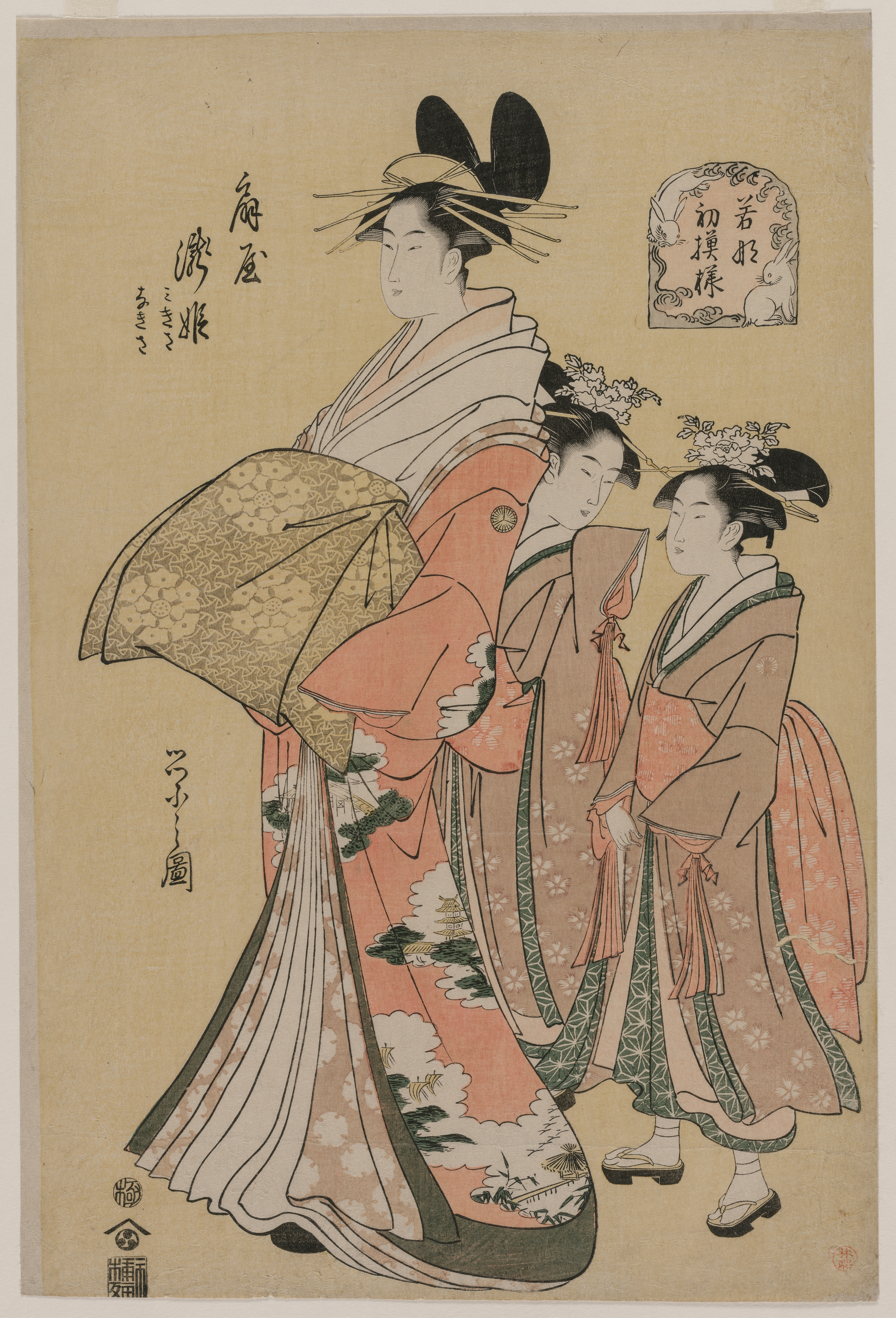The Courtesan Takihime and Attendants from "New Patterns of Young Greens," Chōbunsai Eishi

Full description
The Courtesan Takihime and Attendants from "New Patterns of Young Greens" (1795), Chōbunsai Eishi, color woodblock print, 38.8 x 26.1 cm
Chōbunsai Eishi depicts a courtesan, most likely an Oiran, walking through the streets on New Years with her young kamuros, her apprentices, on each side of her (Cleveland Art Museum). Oirans, being the highest ranking courtesan of Yoshiwara, wore the latest fashions and defied sumptuary laws of the time that prohibited commoners from wearing colors like red and gold, silk, embroidery, and intricate designs (Vaporis, 27). Takihime wears a red outer robe that displays a scene of sails in the wind, clouds, a bridge, and a castle. Her attendants have peaks of red in their undergarments, tassels, and sash, but wear an outer robe covered in flowers and the crest of the House of Fans tea house on their shoulders (Cleveland Art Museum). Although they are wearing multiple layers, they are sure to leave room for the nape of the neck to peek out, standing tall and elegant, alluring the crowds as they parade themselves around.
Courtesans not only had to keep up with strict beauty standards, but had to keep up a character that enhanced the fantasy for customers. Courtesans were expected to be intelligent in order to entertain famous and wealthy guests like samurai, and learn certain skills like painting or calligraphy (Dalby, 56). Takihime emphasizes the performance of exaggerated femininity through her tall stance and clothing as she wears a prohibited color resembling wealth, high status, and desirable beauty. The scenic images, probably mimicking a popular art piece or story of the time, emphasizes her intelligence and strong presence in culture.
Comments
to view and add comments.
Annotations
No one has annotated a text with this resource yet.
- typeImage
- created on
- file formatjpg
- file size17 MB


